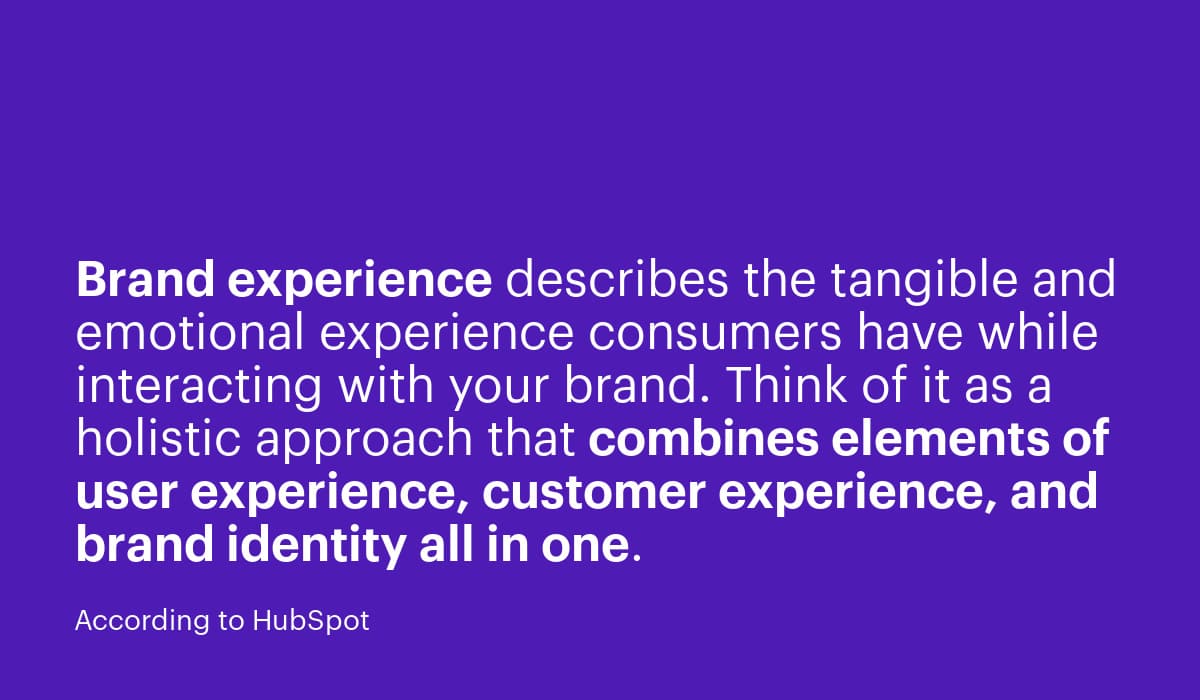How Your Workforce Impacts Your Brand Identity
Does your organization know how to create brand identity using an overlooked resource? Find out how your workforce is key to brand identity.

Does your organization know how to create brand identity? Many organizations are ignoring one of their biggest levers to achieve it: their workforce. In practically every industry, competition has increased dramatically. Product is rarely a sole differentiator: a strong brand and great brand experience are crucial to earning customer hearts, minds, and wallets.
In this article, we’ll explore why shining a light on your people empowers the organization to better deliver on its brand promise, and create exceptional brand experiences that keep customers coming back time and again.
Why brand identity matters (and the one crucial element you’re forgetting)
Brand identity is why consumers have strong preferences for Coca Cola or Pepsi over generic brands—even when research shows there’s little taste preference. This brand identity is so strong that, when given samples of different cola beverages, participants’ brain scans showed more neural activity when told they were trying Coca Cola or Pepsi versus generic brands, despite all samples containing the same drink. In the case of cola, strong brand identity matters more than the fundamental product itself.

A strong brand identity leads to increased brand recall, increased brand awareness, increased authority, increased differentiation against competitors, and ultimately, increased sales, loyalty, and repeat sales. Strong brand identity is often a more reliable predictor of sales than your product or service itself.
But many organizations forget one of the most important elements of how to create brand identity. You probably focus plenty of resources on branding and marketing. You probably spent a near-fortune on your logo, visual identity, positioning, and messaging.
But brand identity and a good brand experience also hinges on your people. Let’s unpack what that means.
The missing link of brand identity: your workforce
The workforce are the gatekeepers of brand identity because they’re the gatekeepers of the holistic brand experience—that is, the sum of interactions that prospective customers have with your brand, from first touchpoint onwards.
In the retail sector, for example, retailers with the right employees enjoy the highest average purchase value, the best customer satisfaction, and the most repeat store visits.
Your people determine how innovative your organization is, and how creative. They determine your marketing communications, your social media presence, your PR, and your advertising. The people working at your company determine the quality of your products and services. Your employees determine how quickly those products and services arrive with the customer. Your people determine how fast problems are resolved. In sum: your people determine your reputation.
Workforce optimization for brand identity
In other words, astronomical investment into your external image won’t amount to much if you’re not also focused on your workforce. Make sure your people deliver your positioned brand identity.
It’s not that logos, products, packaging, messaging, values, and so on aren’t important. But long-term, strong brand identity depends on having the right people in the right places, with the right skills and capabilities, and the right engagement and motivation, to deliver an aligned brand experience.
For organizations that are focused on strengthening brand identity, workforce optimization is a string to your bow worth attention. Here are three major questions workforce analytics can answer, to help CMOs improve brand experience and strengthen brand identity.
1. Do we have the right people in the right places to deliver products and services aligned to our brand promise?
Your products and/or services represent a huge chunk of the total brand experience. What they are, what they do, how they’re promoted, how they’re sold, how they arrive or are implemented, what aftercare they’re associated with. And that entire lifecycle hinges on having the right people in the right places to deliver. This can be a major challenge for retailers, who can face business-critical staffing shortfalls during peak holiday times.
If you’re aiming to strengthen a brand identity around being innovative and modern, you need the people resource in product innovation to deliver against that mandate. Likewise, if your brand identity hinges on providing customers with lots of flexibility, this likely needs to translate into development resources to back up those claims. And often, building the right skills mix demands an intelligent approach to reskilling, especially in industries besieged by automation.
When the organization is equipped with better people insights, marketing leaders can work alongside HR to interrogate the composition of the workforce—and ensure the ability to deliver on your brand promises is woven into the fabric of the organization.
2. Do we have enough people—today and tomorrow—to maintain delivery at the pace our customers expect?
Long delivery times are one of the fastest ways to derail the brand experience. Shipment delays; missing products; spiralling wait times; pushed-back projects; slow implementation; long wait times for discovery calls: whatever form it takes for your organization, making customers wait is a proven path to dissatisfaction (and often costly cancellations too).
Great brands rely on great customer support
Great customer support is one part of the equation. A recent study found that 91% of consumers believe waiting for a product is more bearable if the brand delivers a great experience with regular, timely, and personalized communications. Workforce analytics can show the effectiveness of learning and development programs, identifying which customer service reps need support and helping them upskill.
The other part is to reduce delays at their root, by unpicking and addressing their cause. There’s no single answer, but workforce continuity usually plays a significant part. Unplanned absence and voluntary turnover both mean there are fewer people available to resource key projects or maintain smooth delivery, driving up customer wait times.
People insights empower the organization to visualize holistically what workforce issues mean for customers and solve them at their source. For example, this healthcare organization reduced annual turnover by 10% with workforce analytics, translating into better patient care.
3. Does our workforce experience support our brand experience?
Brand identity is strongest when it becomes a self-perpetuating truth fueled by your culture. Everyone from new hires to temps to leaders are aligned around and disseminate your brand identity in everything they do.
Equally, an excellent brand experience hinges on happy, engaged people. An engaged, inspired, and motivated workforce delivers a consistently great brand experience which leads to more satisfied customers and more repeat sales. Creating an excellent employee experience helps businesses in the restaurant, retail, and hospitality sectors adapt to the ongoing worker shortage.
Diversity and inclusion considerations
Does your brand represent the customers you serve? When your workforce is representative (and inclusive, so everyone is equally able to contribute) your brand experience and brand identity becomes better aligned to your customers in a profound way. This is one of the major use cases for workforce analytics, as e-commerce giant WayFair proves.
Lack of diversity leads to negative optics. iMcKinsey found that 75% of Gen Z consumers will boycott companies that discriminate against race and sexuality across advertisement campaigns, for instance.
People analytics equips the organization to address issues like these, taking a microscope to workforce composition, tracking diversity flows, optimizing for diverse development and promotion, optimizing employee experience, and connecting EX and CX data.
Your people are your biggest brand asset: Don’t ignore them
It’s a rare marketing organization that doesn’t care about strengthening brand identity and improving brand experience. In an increasingly competitive environment, a strong brand identity is your most powerful route to differentiation, sales, and profitability.
The workforce is a major contributor—but without people insights, you’re in the dark about which levers you could pull, or problems you must solve to win.
When HR leaders are empowered with workforce analytics, it doesn’t only elevate HR. It elevates every department across the organization to achieve your biggest business goals.
The bottom line? You need to really, really see your employees if you want to maximize their impact on your brand. Here’s how.
Interested in learning more about Visier? Schedule a demo today!
On the Outsmart blog, we write about workforce-related topics like what makes a good manager, how to reduce employee turnover, and employee burnout. We also report on trending topics like the Great Resignation and preparing for a recession, and advise on HR best practices like how to present headcount data to your CEO, metrics every CHRO should track, and connecting people data to business data. But if you really want to know the bread and butter of Visier, read our post about the benefits of people analytics.


